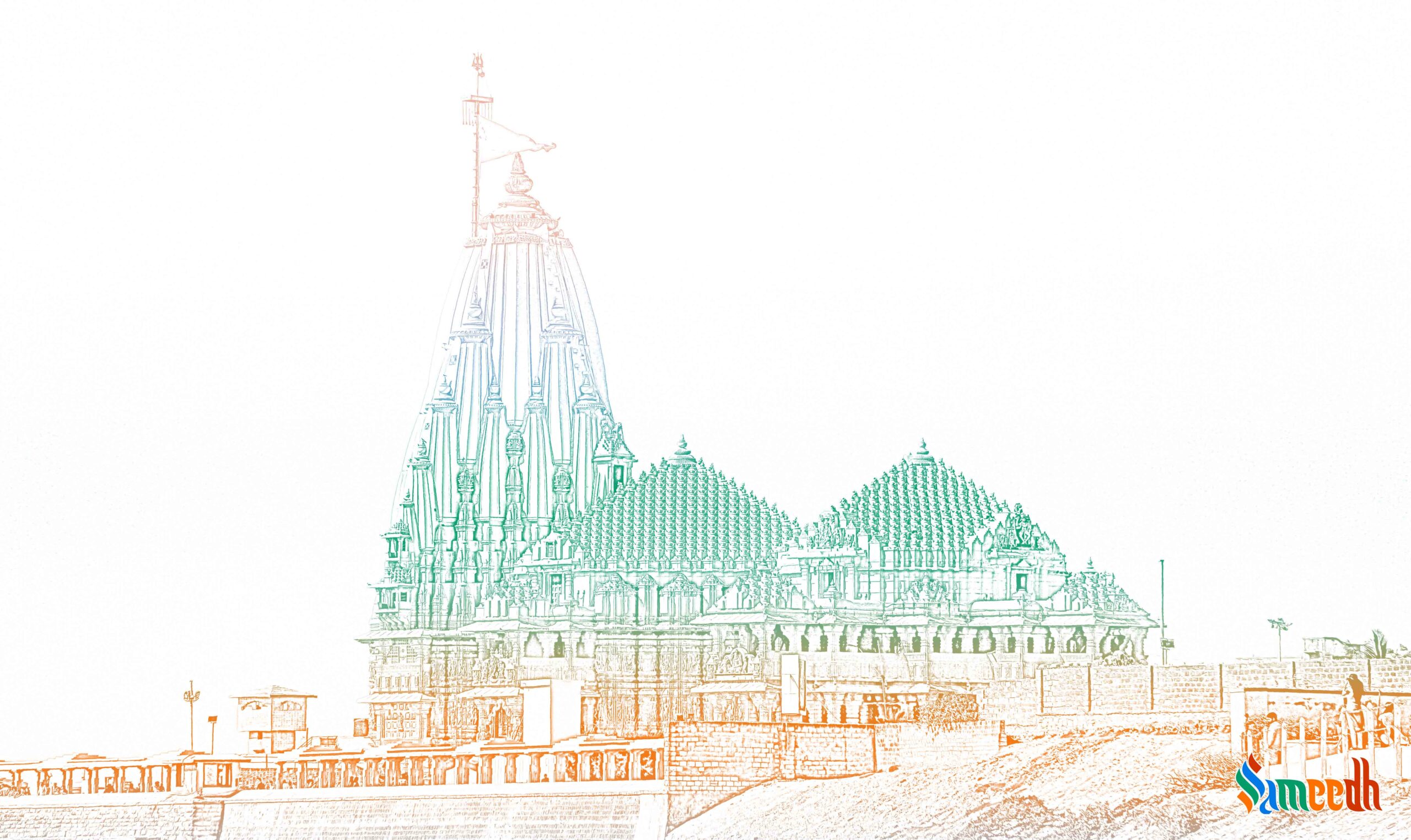The significance of the holy temple built for lord Shiva in Somnath

Somnath is one of the most famous Hindu temples in India. It lies on the coast line of Prabhas Patan, in Veraval, in the western state of Gujarat. It is located at the junction of three rivers, or triveni sangam, Saraswati, Kapila and Hiranya, at the shore of the sea. This sacred place is a Jyotirling, symbolisation and shrines of lord Shiva. Jyoti translates to the word radiance and linga is the idol worshipped as a representation of lord Shiva, entirely meaning, “a pillar of column of light”. There are 12 such sacred shrines of Shiva spread across the Indian subcontinent, from which Somnath is believed to be the first one.
History
It is known that this temple existed 200 centuries before, it dates back to 348 BC or even before that. This shrine has undergone multiple reconstructions over the years as it has been destroyed by foreign rulers. This sacred Hindu place was adorned with gold and attractive architecture, making it a prime spot for looting. A muslim ruler Muhmad Ghazni from the country of Afghanisthan demolished the entire temple to assert dominance over Hindus. Later, it was rebuilt but then again attacked by another muslim king called Alauddin Khilji. After yet another reconstruction, it could not remain intact for long as it was destroyed by the infamous mughal ruler Aurangzeb. After various such incidents, the temple was left as it is and only reconstructed in 1951 by Sardar Vallabhbhai Patel and Dr. Rajendra Prasad, former deputy Prime Minister and President of India. The latter had said, “The power of creation is always greater than the power of destruction”, observing the destructive environment surrounding Somnath. It is known to have been rebuilt around 17 odd times and yet managed to stand the test of time, such is the magnificence of this holy temple. This is the prime reason why Somnath temple is a popular one amongst Shaivites or worshippers of Shiva and Hindu followers all over.
Mythologically too it has been made several times. Originally, Somraj, the moon god, made the temple out of pure gold in Satya Yuga, an era of Hinduism. It was later rebuilt by Ravan, the chief of Lanka with silver in Treta Yuga. In Dwapar Yuga, it was made out of sandalwood by Krishna, an avatar of lord Vishnu.
The origins of the temple, as mentioned in various religious scriptures, goes back to the son of Brahma, god of creation, Dkasha. King Daksha had 27 daughters who were married to Somraj, the moon god. Rohini was Somraj’s favourite, making the other wives jealous. This infuriated King Daksha and he cursed Somraj to lose his shine. A frightened Somraj then headed to Shiva who advised him to bathe in the rivers of Hiranya, Kapila and Saraswati, the junction of holy sacred rivers. Somraj regained his lustre and as a gesture to thank the lord, he embossed the Somnath temple, dedicating the name to that of Shiva’s.
Architecture
The holy temple of Somnath is also known for its rich architectural details, especially the intricate carvings. This place of worship has been built according to the Chalukya style, which is a type of architecture hailing from the Indian state of Karnataka. Somnath is built in such a way that there lies no land mass towards its South till the continent of Antarctica.
The entire temple is seven stories and reaches to a height of 156 feet. It is said to be created by Sompuras, the renowned masons of Gujarat; their perfection of style is noticed to be reflected in the details of the temple. Even the ceilings are fitted with jewels and display of paintings.